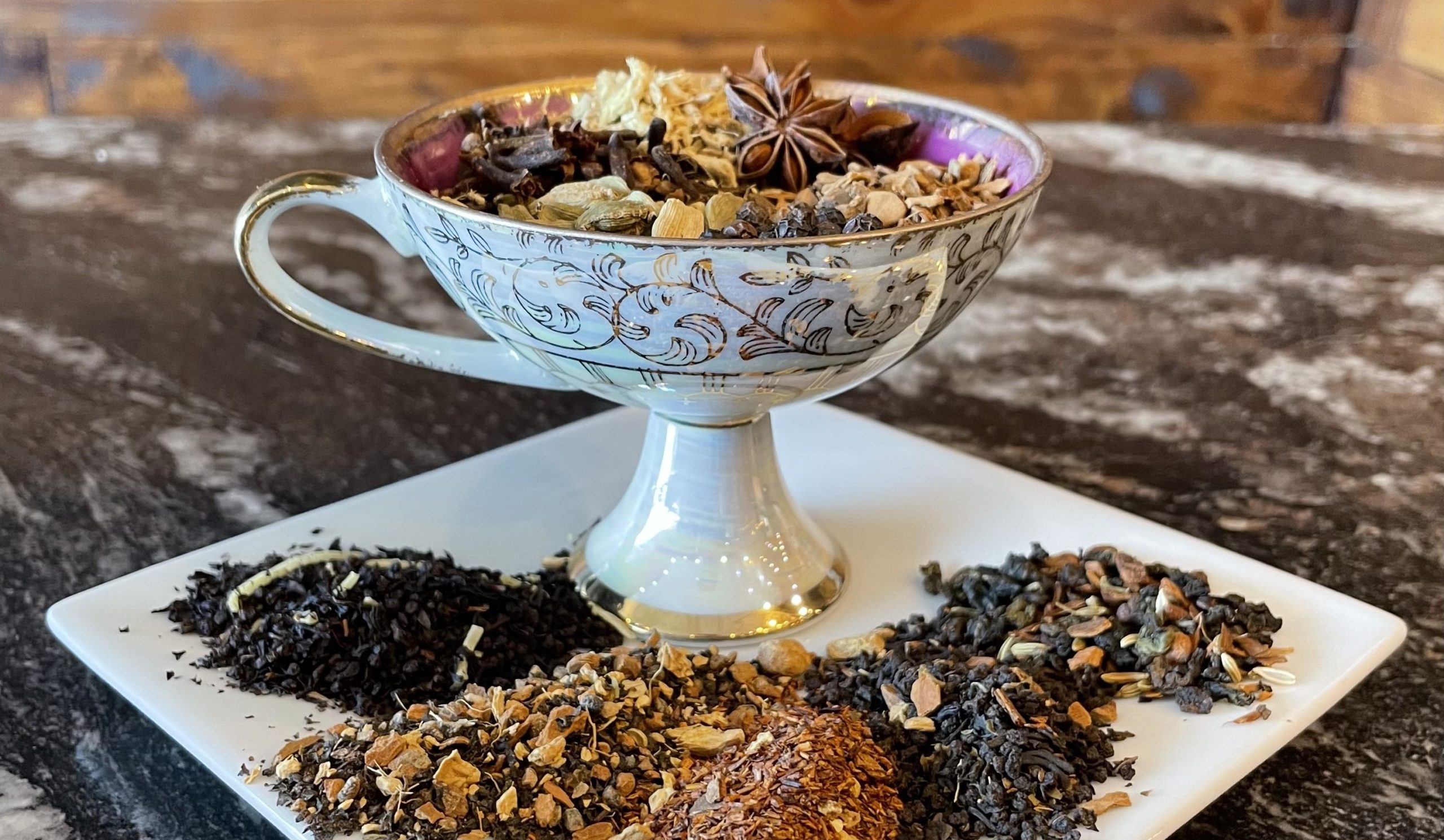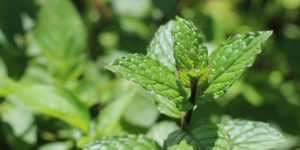Chai is so much more than what we are often served under the guise of chai!
Chai comes from Ayurvedic traditions in India, going back hundreds of years. This unique tea utilizes Ayurvedic spices that are associated with stimulating digestion and balancing the systems in the body. And indeed, having a warming cup of chai after a meal sometimes is just the thing to make everything seem right in the world. There are many ways of making chai, but when it comes to creating true heartfelt flavors, utilizing the spices with quality loose-leaf really goes a long way. The versatility that you have in presenting chai using loose leaf is top-notch.
Pre-sweetened concentrates and powders don’t have the versatility of sweetening to taste, or for individual health concerns. Powders have been highly processed and are unrecognizable to what they originated from, and often contain dairy, so they are not advisable to be used by the many people with dairy allergies and sensitivities.
Where do all of these rich and wonderful spices come from? How are we all able to obtain them so easily now? And what is some of the history behind their use in different traditions? Read on to find out more about these beautiful spices and some of their effects on the body. Plus, shop our chai collection here!
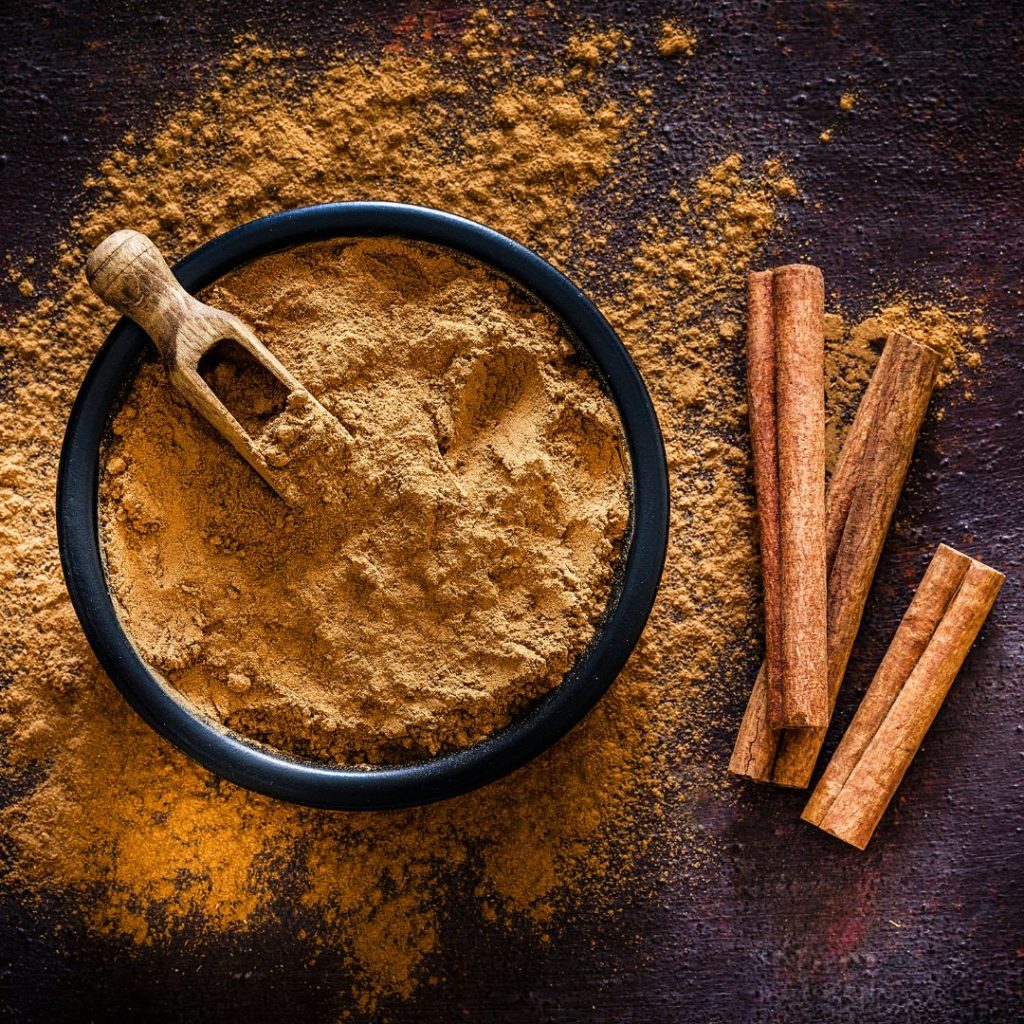
Cinnamon/Cassia
(Cinnamomum cassia, C. loueirii, C. burmanii, Cassia, Chinese Cinnamon, Java Cinnamon, etc.)
“Cassia was used for medicinal purposes in ancient China from 2700BCE, and was among the first spices to reach the Mediterranean via the ancient trade routes. The Egyptians used cinnamon as a culinary spice and for its health properties, but it is unclear whether they used cinnamon or cassia. Persians knew cassia and cinnamon as darchini, and used them in savory and sweet dishes. By the 5th century BCE, cassia had been identified as distinct from cinnamon. Medieval English and French cookbooks referred to cassia and cinnamon as ‘canella’, but cassia’s coarser flavour saw its status demoted; in his 15th-century book of manners, Book of Nurture, John Russell wrote that ‘Synamone is for lords, cannelle for common people’. Today, cassia accounts for nearly 50 per cent of the world’s cinnamon supply, and is a key spice in China and Southeast Asia. It is popular in North America, where most ‘ground cinnamon’ is actually cassia.” – The Science of Spice, Farrimont. P.82
“Cassia has a sweet, warming taste, but is bitter and lacks the floral, citrus notes of cinnamon. Its deeper, spicier, less subtle flavour is best suited to robustly flavored savory dishes, although the spice can be used in sweet baking… Cassia’s flavor profile is dominated by cinnamaldehyde, the compound that gives cinnamon and cassia their recognizable taste. Tannins, which give a mouth-puckering astringency, are also present and it contains coumarin, a phenol absent in ‘true’ cinnamon, as well as eucalyptus-scented cineole.” – The Science of Spice, Farrimont. P.83
“Cinnamon, used in cooking throughout the world, comes from a tropical evergreen tree that reaches a height of between thirty and sixty feet (thirty meters). The tree grows in low-lying rain forest in India, Sri Lanka, the Philippines, and West Indies. Herbal medicine uses its soft reddish-brown bark and young twigs, both of which are cut and allowed to ferment in the field before being gathered for drying… Cinnamon is one of the world’s most widely used digestive aids. It is also used as a supplement for loss of appetite and dyspeptic complaints, and it has been approved for use for these conditions by the German Commission E. In folk medicine cinnamon has been used for exhaustion and flatulence. Ayurvedic medicine employs it for toothache, nausea and vomiting, and dyspepsia. The cinnamaldehyde in the bark’s essential oil is antibacterial and anti-fungal, and promotes gastric motility. It has a mildly estrogenic effect in animal tests.” – Prescription for Herbal Healing, Balch. P.49
“Cinnamon is warm and stimulating, so it tends to warm up the digestion and the interior, but it is also sweet and astringent, so it nourishes and tones.” – The Earthwise Herbal, Wood. p.193

Ginger (Zingiber officinale, Ginger)
Ginger is native to southeastern Asia, but is widely cultivated in tropical countries throughout the world. The rhizome is used in cooking and folk medicine. The pungent, sweet taste is due to the presence of two oleo-resins, gingerol and shogaol.
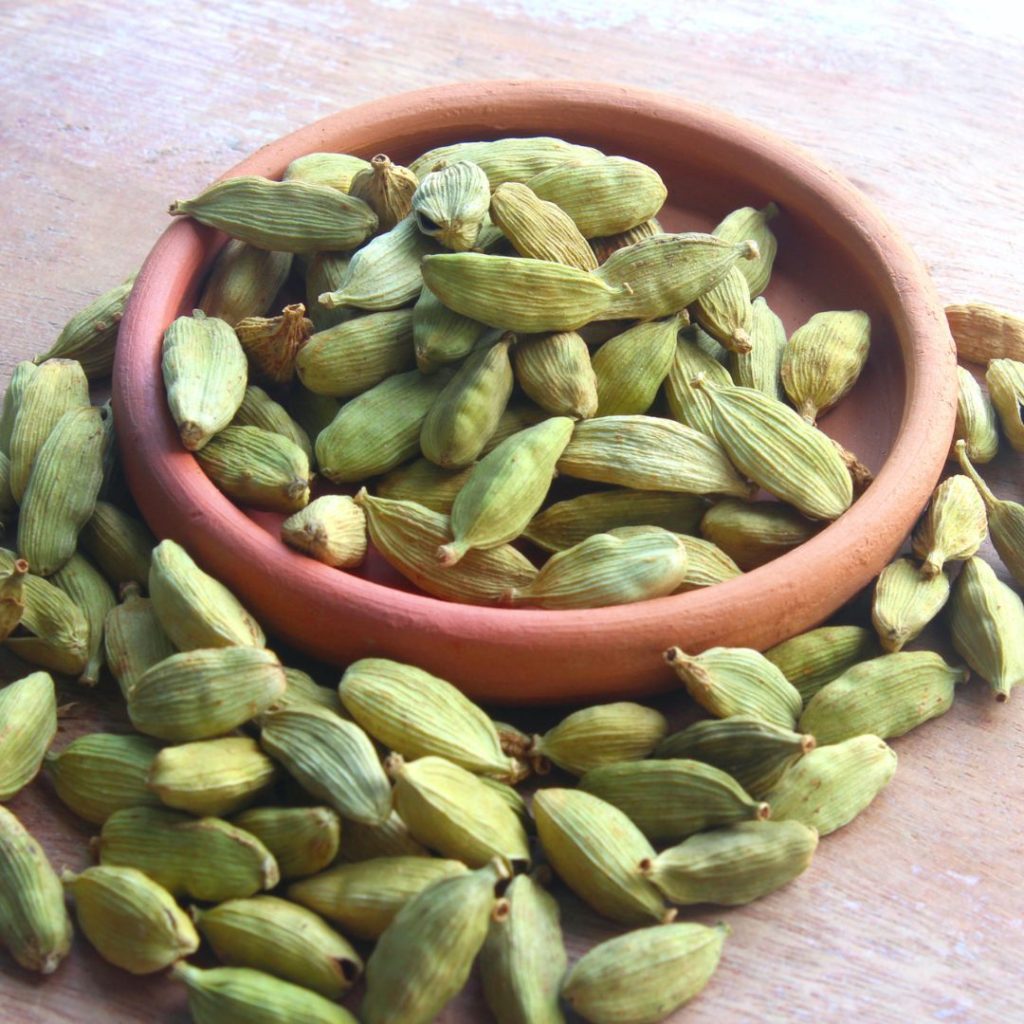
Cardamom (Elettaria cardamomum, Cardamom Seed)
“Cardamom is a member of the ginger family long used in the Old World as a warming stimulant…It kindles the digestive fire.” – The Earthwise Herbal, Wood. p.240
“According to folk medicine, cardamom helps with digestive problems, vomiting and diarrhea, morning sickness, and loss of appetite. In Chinese medicine, it is used for stomachache, nausea, vomiting, and flatulence. Ayurvedic physicians use it to treat ulcers and malaria. The essential oil is antibacterial and anti-fungal.” – Prescription for Herbal Healing, Balch. p.42
“Cardamom has been used for culinary and medicinal purposes in India for more than 2,000 years. The spice was known by the ancient Greeks and Romans, who valued its qualities as a perfume and digestive aid. Vikings from northern Europe are reported to have encountered the spice during their raids on Constantinople in the 9th century CE, and to have taken it back to Scandinavia, where it remains a popular flavoring for breads and pastries. Cardamom began to be grown as a secondary crop in the coffee plantations of British India in the 19th century, and in 1914 the spice was introduced to Guatemala, which is now the world’s largest producer. Around 60 per cent of all cardamom is consumed in Arab countries, where it is a key ingredient of gahwa, a fragrant coffee served as a symbol of hospitality.” – The Science of Spice, Farrimond. p.134
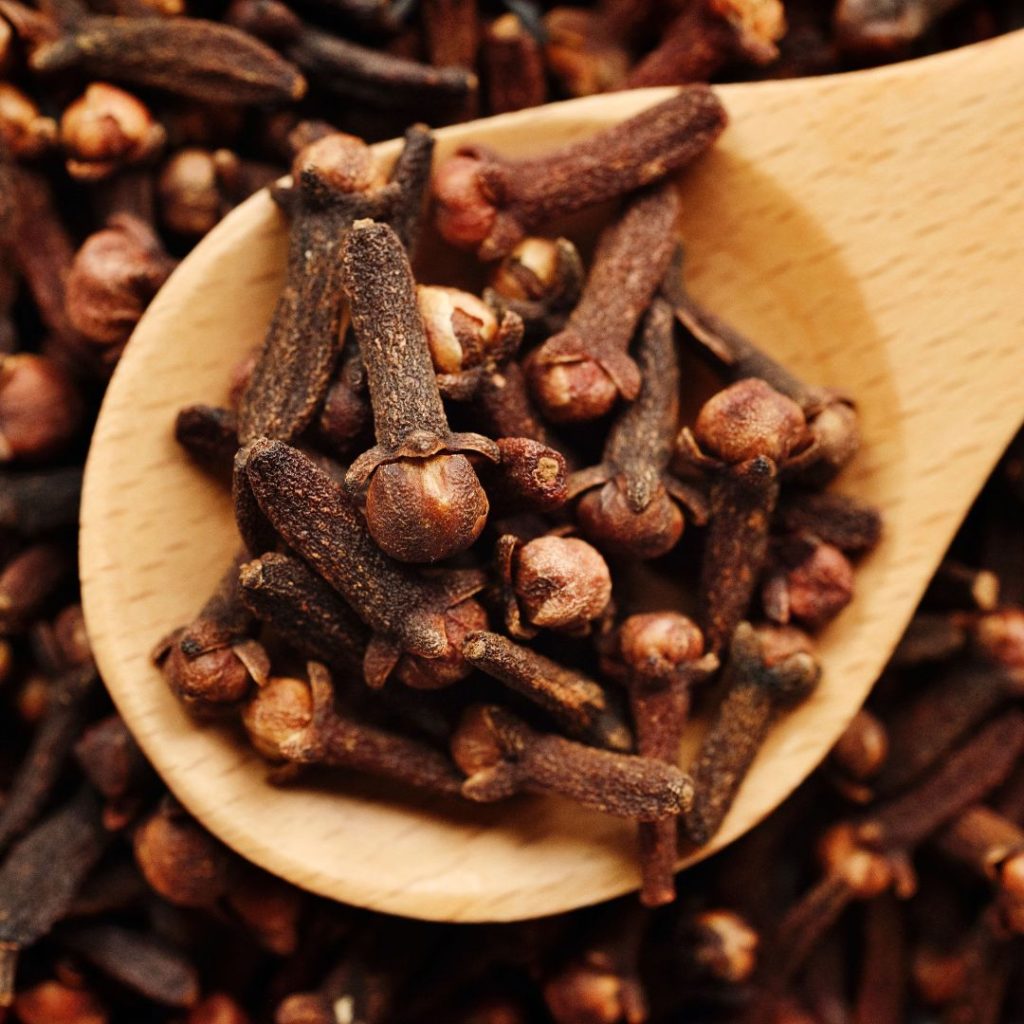
Clove (Syzygium aromaticum, Nail spice)
“The Moluccas (now Maluku) of Indonesia were once renowned as the Spice Islands thanks to a trio of indigenous spices – cloves, nutmeg, and mace – which were cultivated there, and nowhere else, for almost two millennia. Courtiers addressing the Emperor during the Chinese Hang dynasty (206BCE – 220CE) used cloves to sweeten their breath, and the Romans, who named the spice clavus (Latin for nail), used it as an incense and perfume. In the Middle Ages, clove took off as a culinary spice in the West. At first the Republic of Venice had a virtual monopoly of the lucrative trade, but the Portuguese, Dutch, Spanish, and English fought a series of wars to seize control, with the Dutch eventually winning out. In the 18th century, Frenchman Pierre Poivre managed to smuggle clove seedlings to Mauritius.” – The Science of Spice, Farrimond. P.84
“Clove’s powerful flavor is usually tamed by blending it with other similarly warming spices to soften its dominance. Antiseptic properties make it a common spice for pickling, but use sparingly.” – The Science of Spice, Farrimond. P.85
“Oil of cloves is anti-inflammatory, antimicrobial, analgesic, antiviral, and antifungal. It may protect the liver, reduce inflammation of the mouth and pharynx, and help with dental pain when used as a topical anesthetic. It also may…inhibit platelet aggregation, and protect nerves from toxins. In Ayurvedic medicine it is used for halitoses, eye disease, toothache, flatulence, colic, and anorexia.” – Prescription for Herbal Healing, Balch. p.50
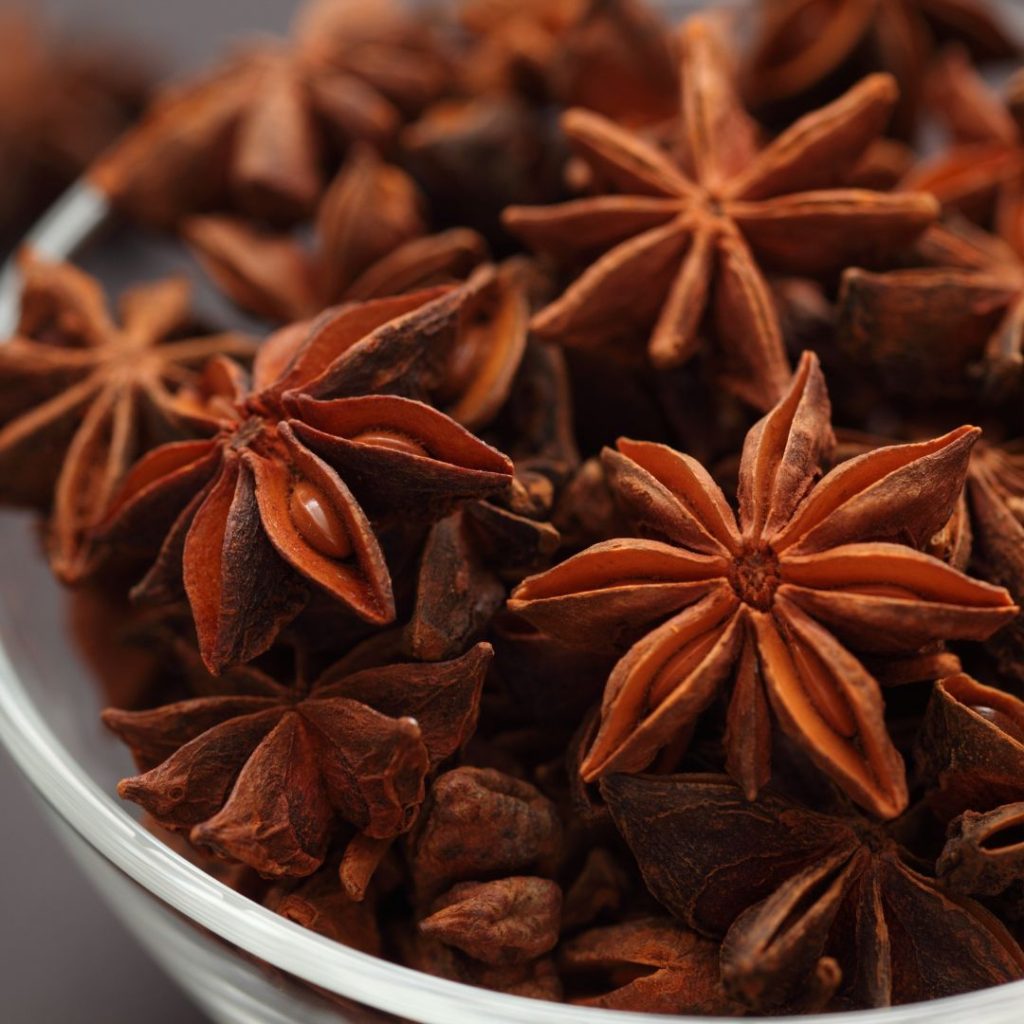
Anise (Illicium verum, Chinese anise, badian anise, Siberian anise)
“Star anise’s Latin name Illicium means “allurement”, referring to its sweet smell and pretty shape. It has been cultivated for more than 3,000 years for culinary and medicinal use in its native China and Vietnam. It symbolizes good fortune in Chinese culture, where finding a star with more than the normal eight arms is considered very good luck. From the late Middle Ages it was traded along the tea route from China via Russia, and for much of this time it was known as Siberian cardamom. Due to the relatively high price of anise, and increasing popularity of Asian cooking, star anise has never been more widely used than it is today. Indeed, shortages have occurred during international flu outbreaks because star anise contains shikimic acid, a chemical used to make the antiviral drug Tamiflu.” – The Science of Spice, Farrimond. p.90
Star anise is essential to Chinese cuisine and indispensable to five-spice powder. In South India, it may be added to a biryani and used in versions of garam masala. Vietnamese pho would be incomplete without its distinctive flavor… The unmistakable herby licorice flavor of anise derives from the powerful anethole compound. Spice pairings can be made through the other, more subtle compounds – anisyl alcohol for its hints of cherry, vanilla, and chocolate, as well as estragole and traces of pinene and limonene… Anethole comprises up to 90 per cent of the flavor oils in anise and conveys the spice’s licorice flavor. The compound also excites the sweetness receptors on human taste buds, making it sweeter than sugar – but without the calories. It is no surprise, then, that anise has long been the spice of choice for flavoring sweet confectionery and liqueurs, especially before the ready availability of sugar.” – The Science of Spice, Farrimond. p.91
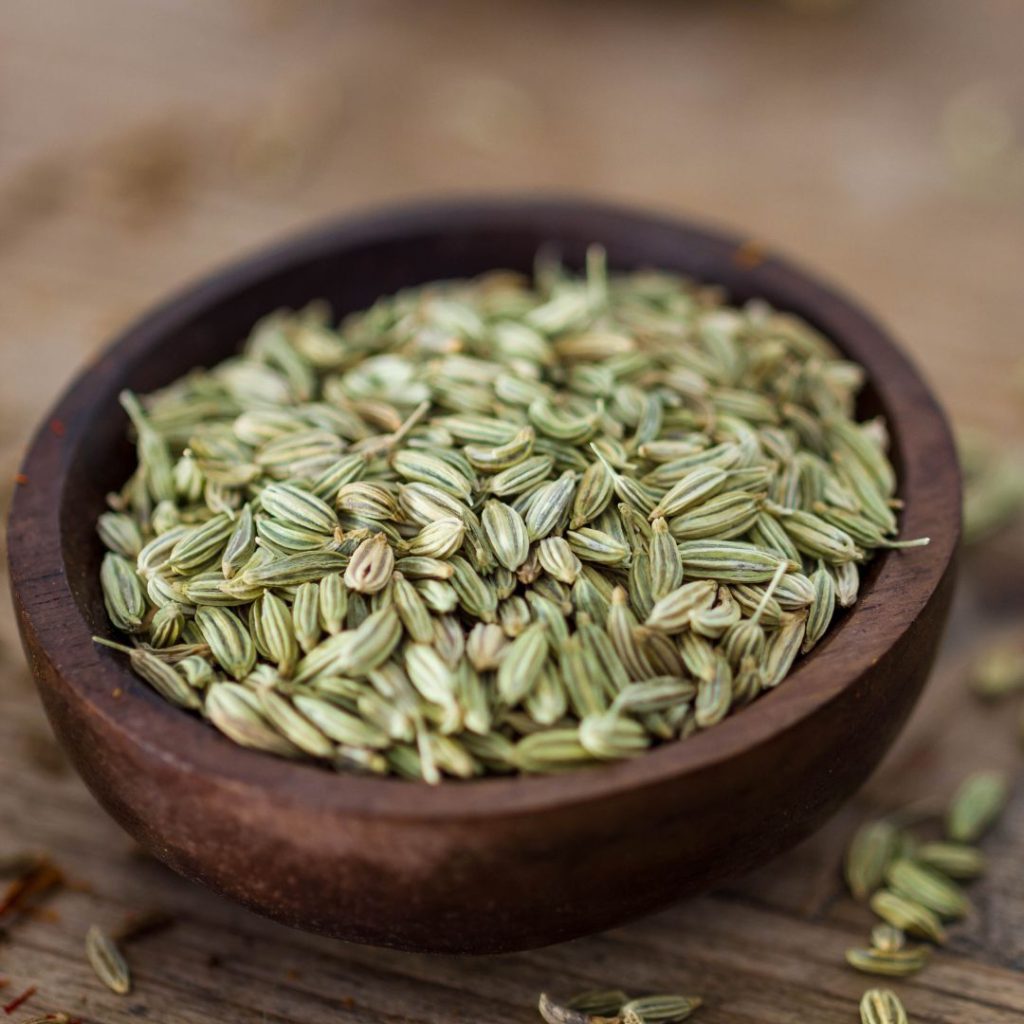
Fennel
(Foeniculum vulgare var. dulce, Sweet Cumin, Fennel)
“Herbalists throughout the ages, from the Vedic tradition of India to the authors of Ancient Greek medical texts, have endorsed fennel for its sight-restoring powers and as an antidote to snake bites. The Greek for fennel is maratho, and the plains of Marathon, where the Greeks won a decisive battle against the Persians in 490 BCE, were named for their “fennel fields”. The Romans introduced the spice to all the lands they conquered, and by the early medieval period its popularity was widespread across Europe, thanks in part to the King of the Franks, Emperor Charlemagne (742-814 CE), who demanded that it be cultivated on his Imperial farms. European colonists used fennel as a preservative and to disguise the flavour of meat past its best. They spread the plant to the Americas and Australia, where wild escapees are now considered noxious weeds.” -The Science of Spice, Farrimond. p.94
“Fennel enhances both sweet and savoury foods with its mild aniseed character. The spice is most notable as a flavoring for Italian salami, and for its use in masala blends throughout South Asia, from Kashmir to Sri Lanka.” -The Science of Spice, Farrimond. p.95
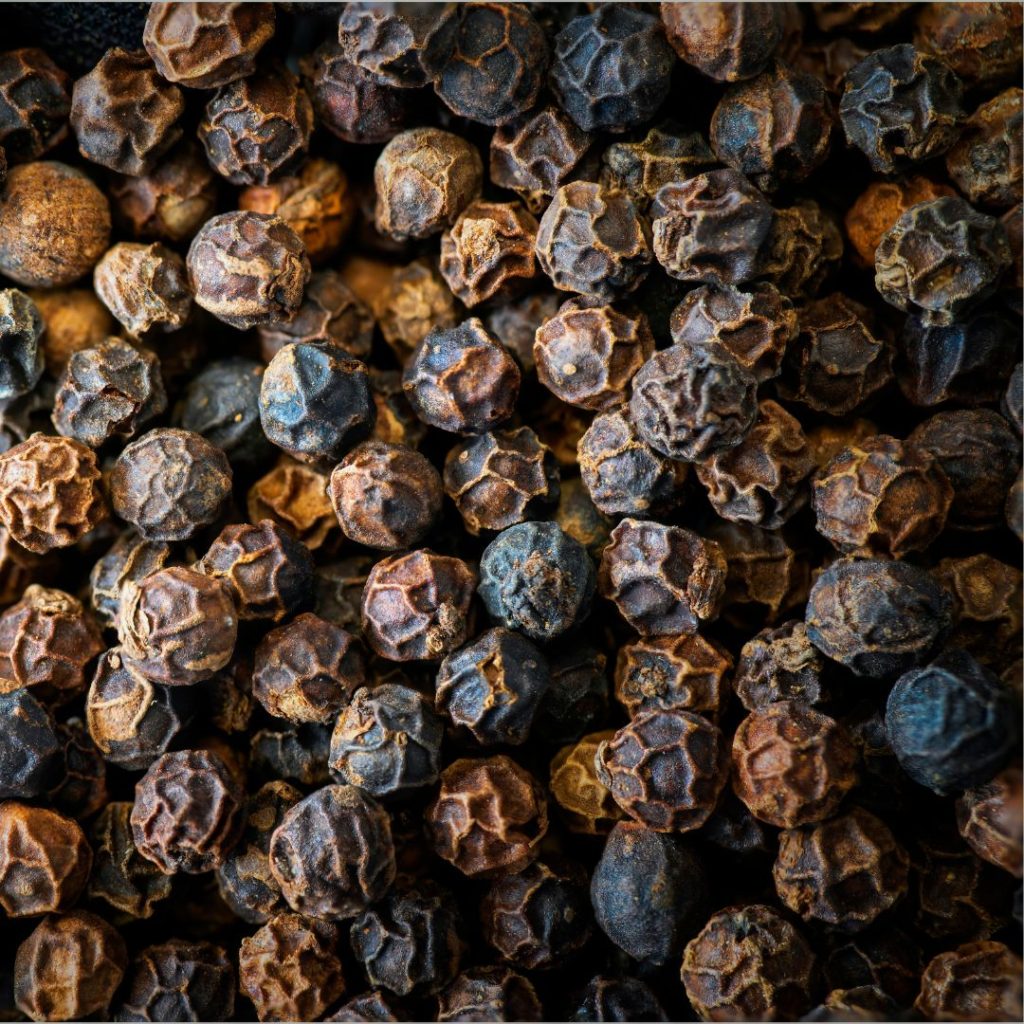
Peppercorn (Piper nigerum – Black Pepper)
“Black pepper is native to southern India and has been cultivated and traded for over 3,500 years. In the 4th century BCE, after Alexander the Great had reached India, black pepper was brought to Europe along newly established trade routes. The highly valued spice quickly became commercially important, and Arab traders established a monopoly on its transport to Europe. By the Middle Ages, black peppercorns had not only become a culinary status symbol, but were also accepted as currency. The Portuguese explorer Vasco de Gama set off to find and take control of the source of this costly spice, and discovered a sea route to southwest India in 1498. For the next century the Portuguese controlled the black pepper trade. In the 17th century they lost their monopoly to the Dutch, who lost it to Britain in the 18th century, when the British Empire took control of the spice trade in the tropics.” – The Science of Spice, Farrimond.
Craving that comforting chai taste and aroma? Shop our chai collection here!
References:
- The Earthwise Herbal: A Complete Guide to Old World Medicinal Plants by Matthew Wood. North Atlantic Books, 2008
- Prescription for Herbal Healing, 2nd Edition. by Phyllis A. Balch, CNC. Avery (Penguin Group), 2012.
- The Science of Spice: Understand Flavour Connections and Revolutionize Your Cooking, by Dr. Stuart Farrimond. Penguin Random House, 2018.

